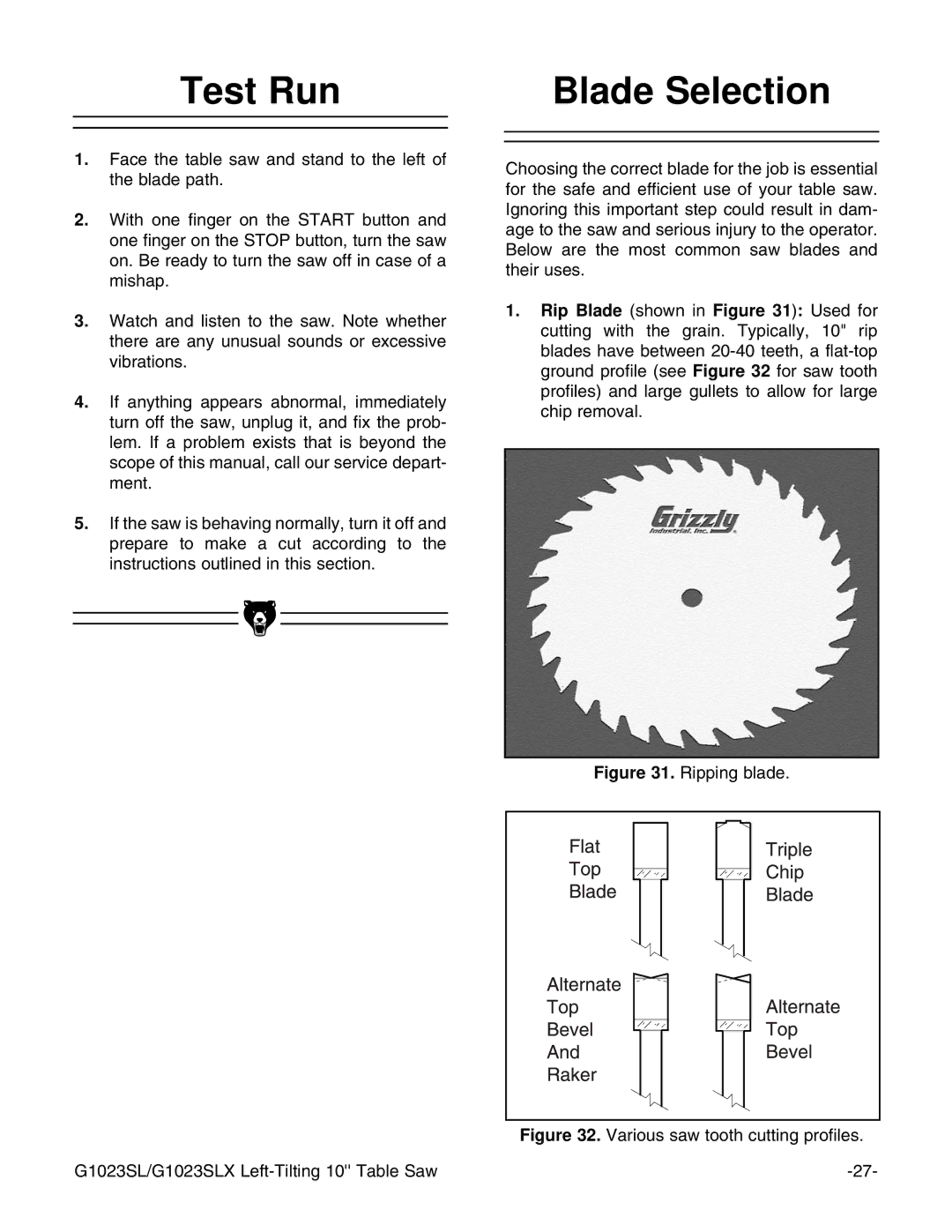
Test Run
1.Face the table saw and stand to the left of the blade path.
2.With one finger on the START button and one finger on the STOP button, turn the saw on. Be ready to turn the saw off in case of a mishap.
3.Watch and listen to the saw. Note whether there are any unusual sounds or excessive vibrations.
4.If anything appears abnormal, immediately turn off the saw, unplug it, and fix the prob- lem. If a problem exists that is beyond the scope of this manual, call our service depart- ment.
5.If the saw is behaving normally, turn it off and prepare to make a cut according to the instructions outlined in this section.
Blade Selection
Choosing the correct blade for the job is essential for the safe and efficient use of your table saw. Ignoring this important step could result in dam- age to the saw and serious injury to the operator. Below are the most common saw blades and their uses.
1.Rip Blade (shown in Figure 31): Used for cutting with the grain. Typically, 10" rip blades have between
Figure 31. Ripping blade.
Figure 32. Various saw tooth cutting profiles.
G1023SL/G1023SLX |
